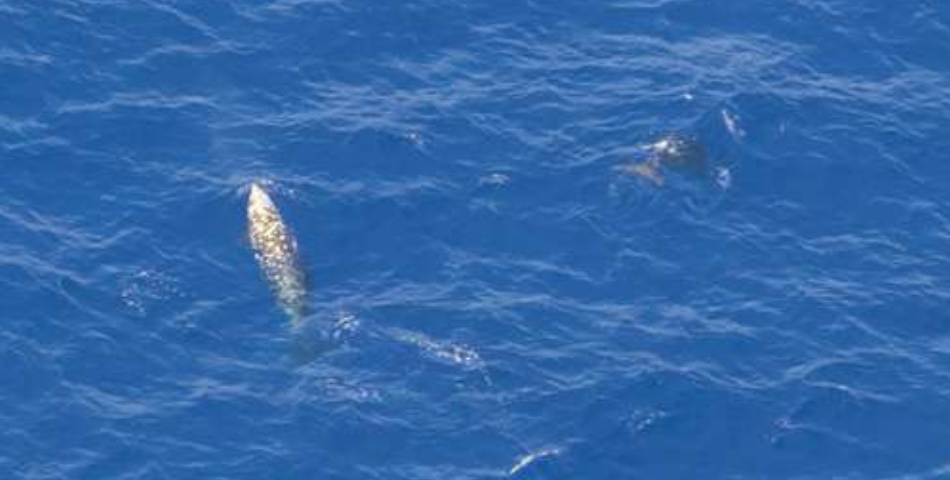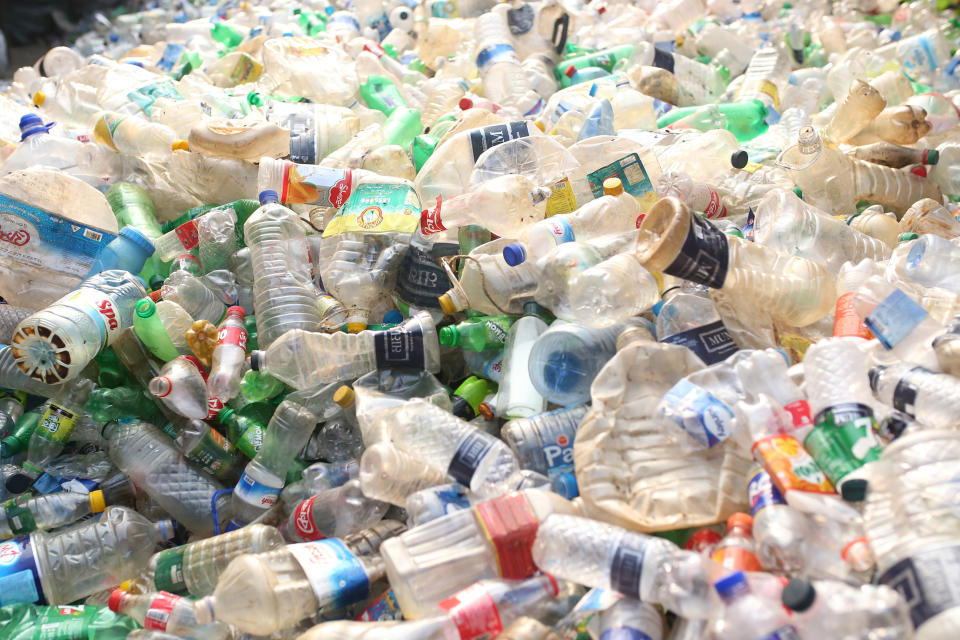Whales seen swimming in Great Pacific Garbage Patch for first time

Whales have been seen swimming through a vast collection of plastic rubbish in the Pacific Ocean, putting their lives at risk from swallowing plastic or becoming entangled.
Biologists spotted four sperm whales, three beaked whales and two baleen whales swimming among the floating islands of plastic.
The researchers wrote: ‘Our sightings of numerous ocean plastics of a wide range of sizes suggest that cetaceans within the [patch] are likely impacted by plastic pollution, either through ingestion or entanglement interactions with debris items.’
Writing in the journal Marine Biodiversity, the scientists spotted the whales from a plane using infrared and laser-scanning LIDAR, IFLScience reports.

Up to 10 million tonnes of plastic are thought to be dumped in the sea each year, Newcastle University researchers warned earlier this year.
The weight of plastic in our oceans is expected to be larger than the total weight of all fish by 2050.
Sea creatures are dying across the world as a result of our addiction to plastic, with a sperm whale washing ashore in Spain last year with 28 kilos of plastic in its stomach, including plastic bags, nets and a jerry can. It had died from gastric shock.
READ MORE
Could fungi save world from plastic pollution?
Bloodhound reveals ‘desert spec’ car
Mysterious ‘gravity waves’ seen rippling in our atmosphere
Apple announces Airpods Pro with noise cancellation
Every minute of every day, the equivalent of a truckload of plastic enters the world’s oceans, according to Greenpeace statistics.
Waste such as bottles, nappies and beer holders can last for up to 450 years in the environment. Some plastics last for 1,000 years.
There are five trillion pieces of plastic in our oceans.
A plastic bag was found 36,000 feet below the surface, at the ocean’s deepest point, the Mariana Trench.
Most of the plastic found at the bottom of the sea by divers (89%) has one thing in common, the Deep Sea Debris Database reported: it’s waste such as plastic bottles and bags, designed to be used just once, then thrown away.
Tests by Newcastle University researchers found that sea creatures living in the deepest reaches of the sea had fragments of plastic in their stomachs and muscles.


